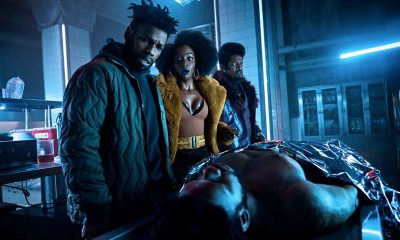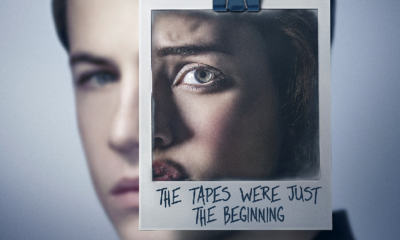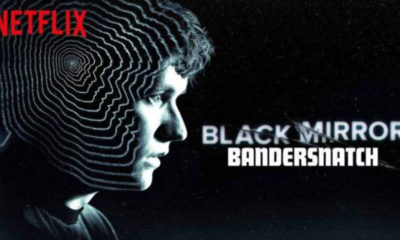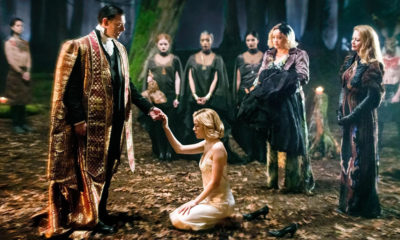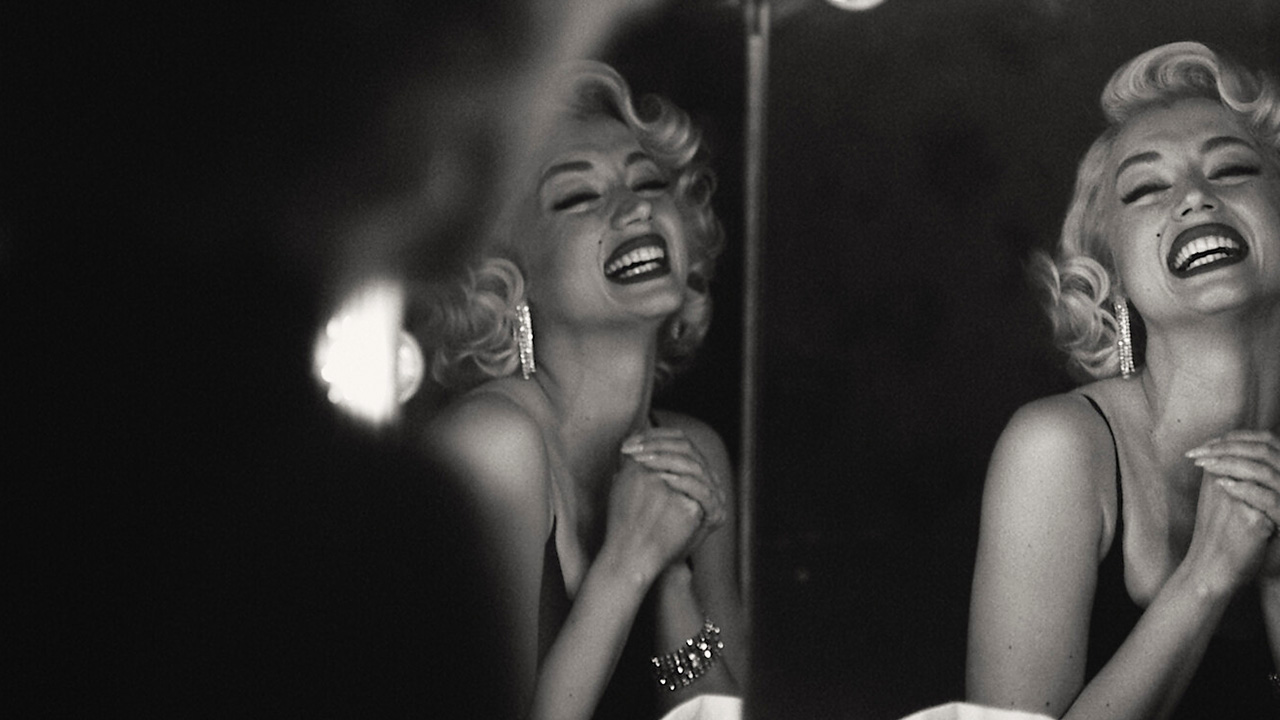
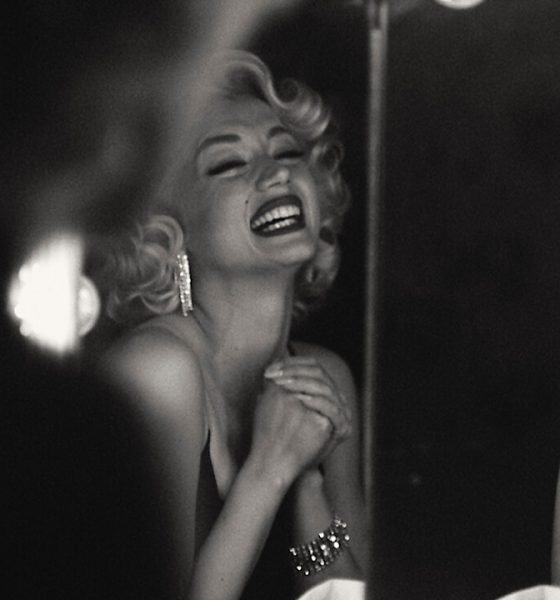
Movies and TV
The Hidden Messages in “Blonde”: Marilyn Monroe’s Life as an Industry Slave
“Blonde” was described by movie critics as being boring, exploitative, and even misogynistic. But there is more to this movie than meets the eye. Through hints and symbolism, “Blonde” describes Marilyn Monroe’s life as an industry slave … and makes Ana de Armas relive all of her trauma all over again.
Most reviews of Blonde describe the movie as a long, difficult, and miserable experience. Deemed unnecessarily cruel and dehumanizing by many, the hate towards the Blonde culminated in two Razzie awards nominations: Worst Picture and Worst Director.
Interestingly enough, Blonde might also win an Oscar. Indeed, Ana de Armas (who plays the role of Marilyn) was nominated for Best Actress. This leads us to a profound existential question: Can an actress be exceptionally good in a movie that is exceptionally bad?
Well, for many, good acting equals lots of crying. If that’s the case, then throw the Oscar right at Ana de Armas because she cries in nearly every scene of the movie. It is honestly overwhelming.
Not only is this excessive crying exhausting to watch but it genuinely gets one concerned about the toll of this role on the actress herself. It is at this point that one realizes that there’s also something “off” about Blonde: It is not a biographical movie, it is torture porn. It is not about Marilyn Monroe’s life, it is about watching Ana de Armas suffer through trauma, turning the movie’s viewers into some kind of sadistic voyeurs.
While the offputting disposition of this movie caused it to accumulate terrible reviews, it does accurately reflect Hollywood’s bizarre, perverted, and obsessive relationship with Marilyn Monroe.
Because Monroe has a special status to the Hollywood elite: She is the ultimate industry slave prototype, the precursor of the modern industry slave. And Blonde was all about Ana de Armas becoming yet another celebrity undergoing “Marilyn Monroe programming”.
Prototype of the Modern Industry Slave
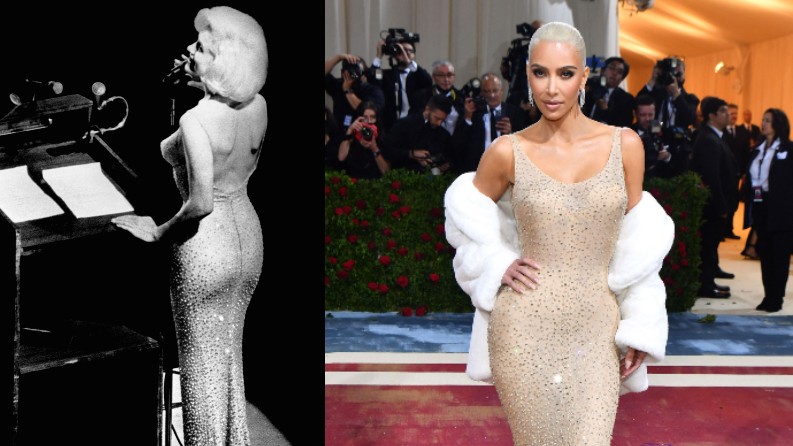
Left: Monroe sings “Happy Birthday” to JFK wearing the iconic “diamond dress”. Right: Kim Kardashian wears this very dress at the MET Gala (with blonde hair).
If you’ve read previous articles on this site (especially my series of articles The Hidden life of Marilyn Monroe), you are probably aware of the dark truth about Marilyn Monroe: She was a Monarch mind control slave that was completely controlled by the Hollywood elite from a young age.
Marilyn Monroe was an orphan, and during her infancy the Illuminati/CIA programmed her to be a Monarch slave. Before becoming an actress, while she was still a stripper, she spent time with the founder of the Church of Satan Anton LaVey. Victims of LaVey have pointed him out as a mind-control programmer. (…)
Marilyn was allowed to have no personal life, outside of the dictates of her programmers and her masters. The programmers and users bore down so hard on controlling Marilyn that they repeatedly came close to driving her insane.
– Fritz Springmeier, The Illuminati Formula to Create a Mind Controlled Slave
Monroe’s entire life was tightly controlled by her handlers and one way to keep MK slaves under control is to make them endure terrible traumas (i.e. forced abortions). Furthermore, according to occult researchers, Monroe was a Presidential Model – a sex slave programmed to “service” powerful people, including JFK himself. Considering the fact that, in the MK system, diamonds are used to identify Presidential Models, the diamond dress seen above takes on a much darker meaning.
While Netflix advertised Blonde as a “fictionalized” take on Monroe’s life, it does depict some of these hidden facts about her life. However, instead of being informative or eye-opening, the movie turns Marilyn’s suffering into a disturbing form of “entertainment”.
In short, this is all about cementing Marilyn’s legacy as an industry slave prototype. Monroe was not merely an MK slave, she was THE MK slave. And the lives of countless modern celebrities follow Monroe’s script (i.e. Britney Spears). In fact, nearly all modern “sex kitten” celebrities have to “channel” Marilyn at one point or another in their career. It has become a bizarre Hollywood initiatory ritual.
And Ana de Armas went all in.
Ana de Armas as Marilyn
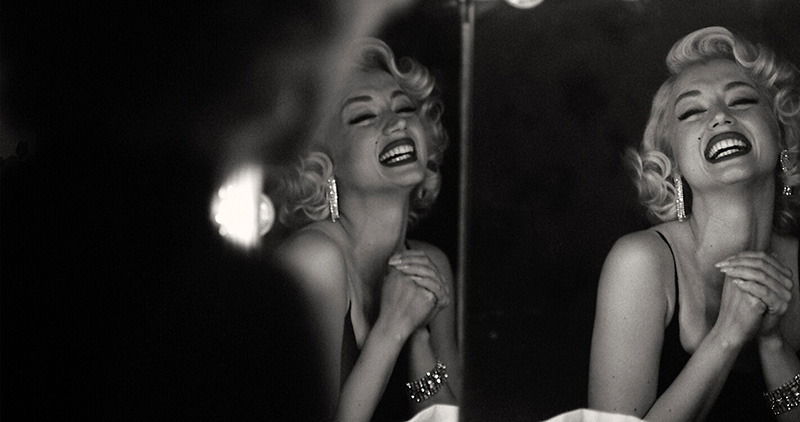
In Blonde, Ana de Armas looks like Marilyn Monroe. But she mostly looks like Ana de Armas (disguised as Marilyn).
Considering the fact that Ana de Armas was nominated for an Oscar for this role, one would think that she was indistinguishable from the original Marilyn. But that is not the case. She was very distinguishable. While the hair, makeup, and wardrobe are rather spot-on, de Armas’ Cuban accent is simply too obvious to ignore.
The net result: There is no suspension of disbelief. It rather feels as if we’re watching Ana de Armas – in disguise – reliving Monroe’s life as a Hollywood MK slave.
For instance, in Blonde, Marilyn gets her first role after an “audition” with a Hollywood executive named Mr. Z.
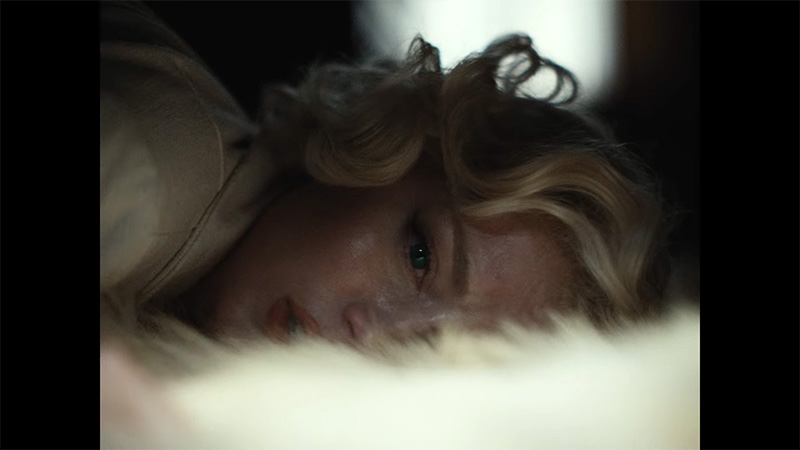
Marilyn is bent over and raped by Mr. Z as she appears to be dissociating (a defense mechanism of MK slaves).
The character of Mr. Z appears to be a reference to the actual 20th Century Fox film producer Darryl F. Zanuck. Although there are no official records of him raping Monroe, he was known for exchanging sexual favors for roles (he even called actresses “studio hookers”).
When Monroe gets pregnant with the son of Charlie Chaplin, she’s encouraged to get an abortion. On her way to the hospital, she changes her mind. However, everyone ignores her. In other words, she was forced to get this abortion.
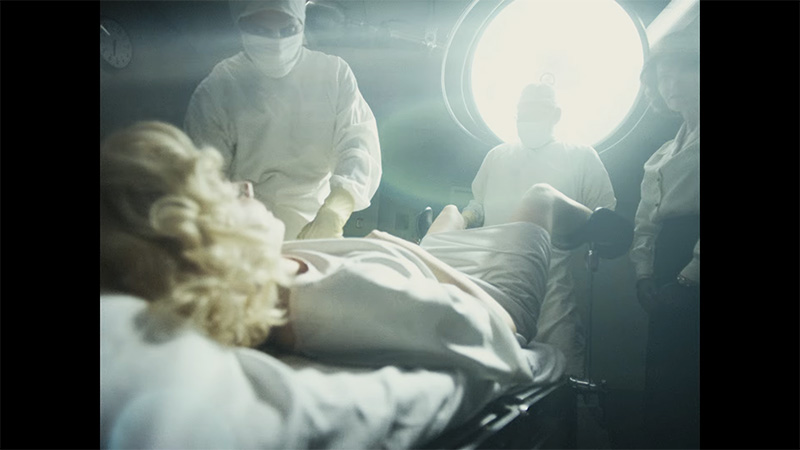
In a particularly upsetting scene, we see Monroe undergoing an abortion as she repeats to the doctors “my mind’s my own to change”. However, everything about that scene confirms that her mind was definitely not her own. Furthermore, the massive spotlight makes it look as if she’s filming a movie scene, hinting at the fact that this traumatic event is part of her “role” as Monroe.
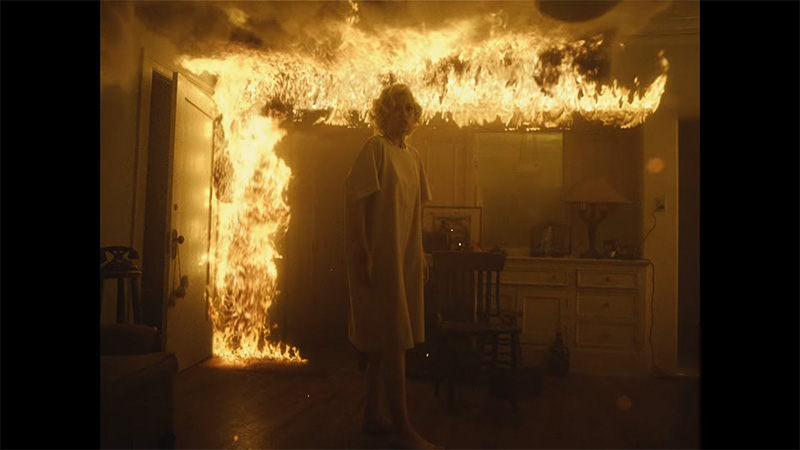
During the abortion, Monroe finds herself inside her childhood home (she’s dissociating). The burning home represents her core persona being destroyed by the trauma.
In Blonde, even Monroe’s iconic flying skirt moment is tainted with pure misery.
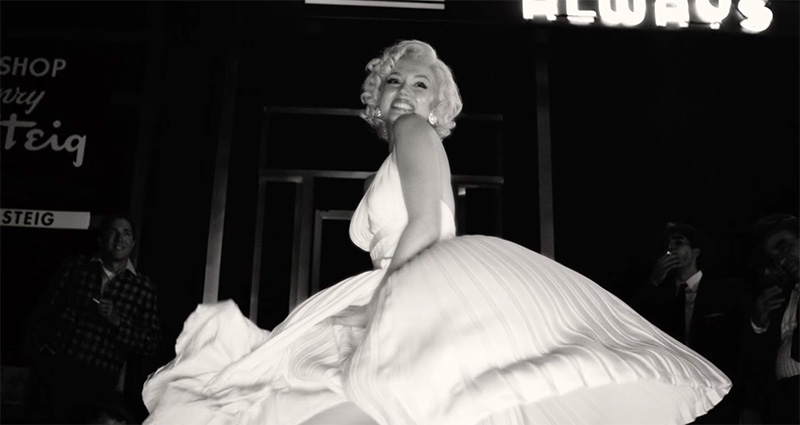
Sad, ominous music plays in the background as we see Ana de Armas cosplay Monroe’s moment in slow motion.
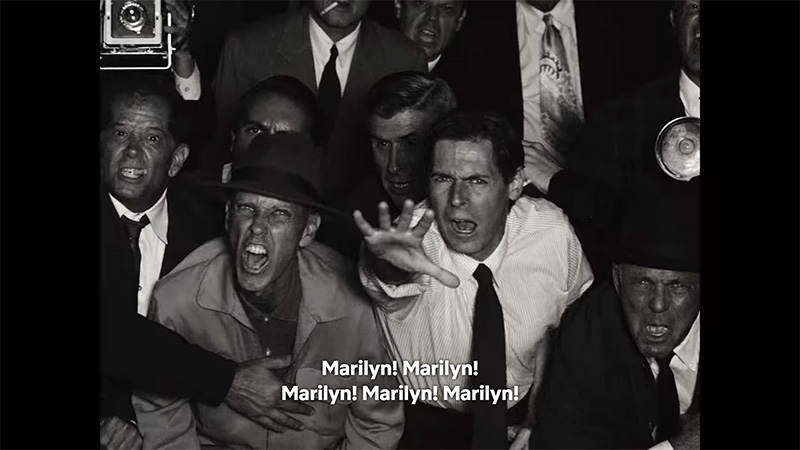
Throughout the film, scenes of Marilyn’s adoring fans have a nightmarish quality to them. These men look angry, menacing, and nearly possessed.
After the skirt stunt, Monroe gets beaten by her husband Joe DiMaggio for “showing her crotch to everybody”. There is no joy in this movie, only suffering.
The Baby And the Roses
After divorcing DiMaggio, Monroe marries playwright Arthur Miller and gets pregnant. There’s some interesting symbolism surrounding this pregnancy and it involves red roses.
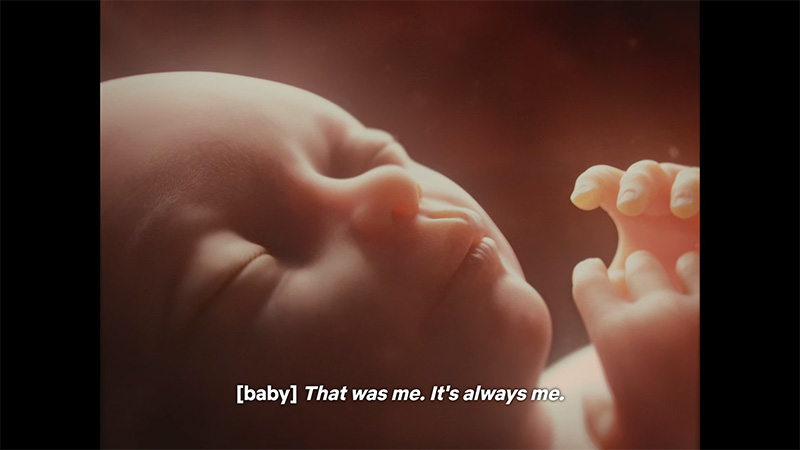
As Marilyn is cutting roses in her garden, she talks to her unborn baby. It replies that it’s the same baby that was aborted previously.
People in mass media complained about that scene, calling it “anti-abortion”. Yup, amid all of the awfulness on display in that movie, these people find a way to get offended by a mother talking to her unborn child. By doing so, they’re completely missing the true meaning of these scenes.
Of course, the worse happens to Monroe. She falls down, hits her stomach, and kills the baby.
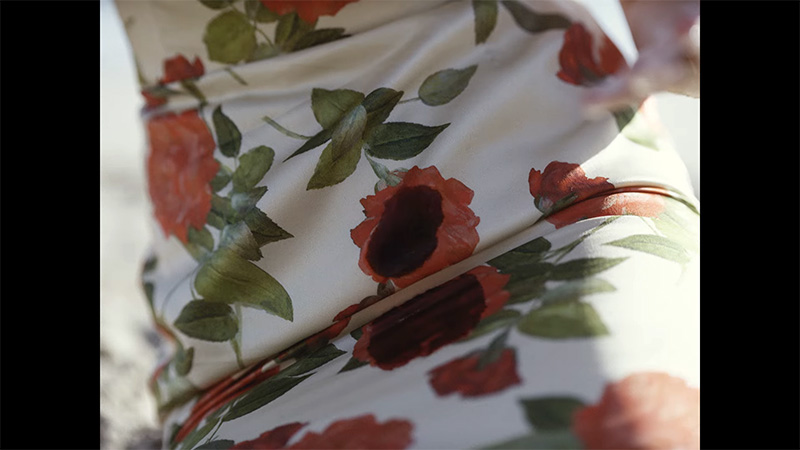
After falling down, Marilyn’s rose-patterned dress gets bloody.
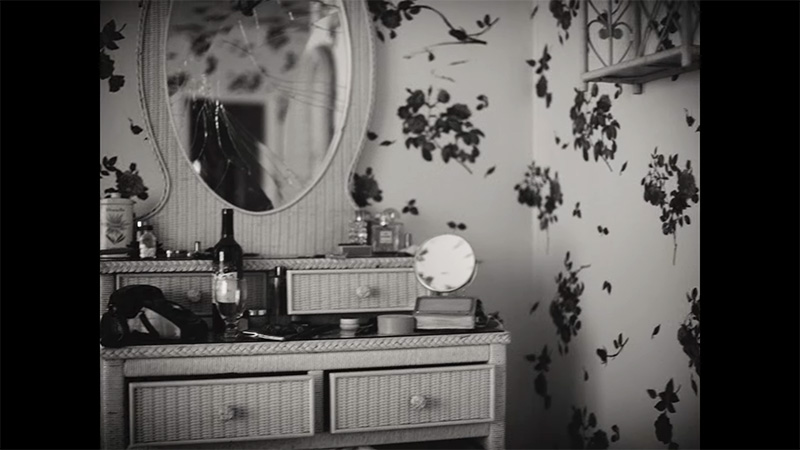
After losing her baby, Marilyn is in a room that’s completely wallpapered with roses. Also, her mirrors are broken – a classic symbol representing the fragmenting of an MK slave’s persona after trauma.
The omnipresence of red roses in these scenes gives the death of this baby a ritualistic dimension. The subtle message: It was less an accident than it was a blood sacrifice.
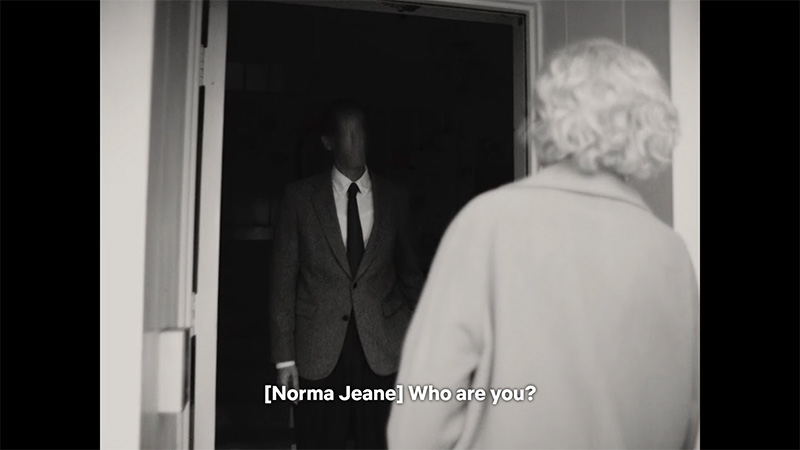
After the loss of the baby, Monroe is so traumatized and dissociative that she doesn’t recognize her husband, as illustrated by the creepy blur effect on his face.
To keep the highly depressed and unstable Monroe productive, she’s drugged by her handlers on movie sets.
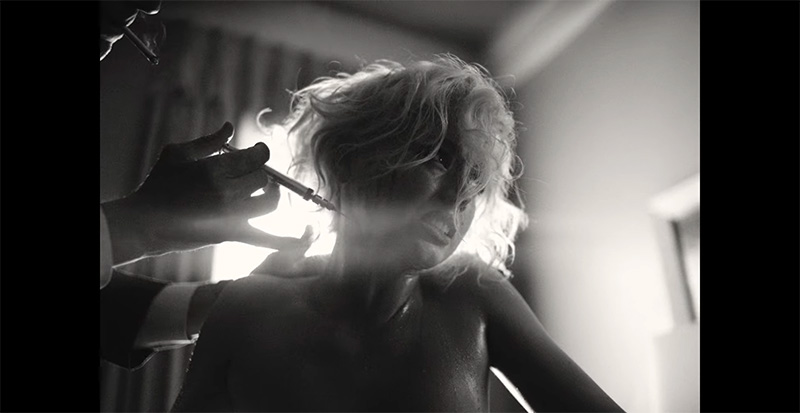
As Monroe breaks down, she is injected with a cocktail of drugs, namely Benzedrine and Codeine. Meanwhile, her make-up artist Allan Whitey” Snider tells her that he’ll “conjure Marilyn within the hour”. That means that he’ll trigger her alter-persona.
Then, things manage to get worst.
JFK’s Sex Slave
While it is usually said that JFK had an “affair” with Monroe, Blonde clearly depicts a different situation: Marilyn was his Beta Kitten slave.
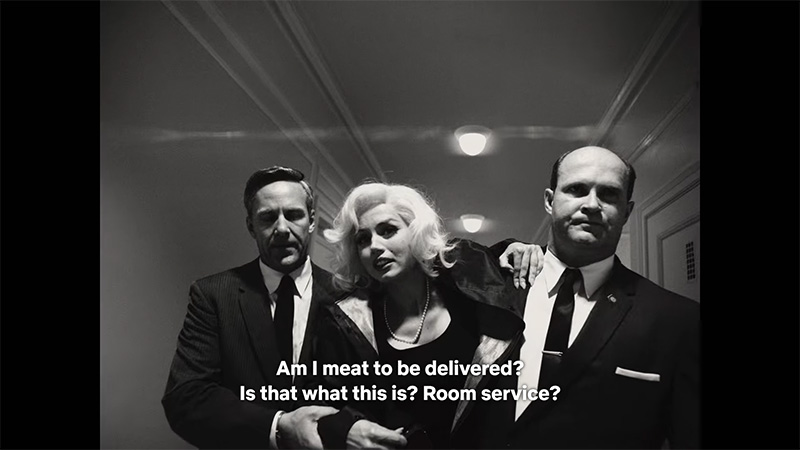
Secret service agents forcibly carry Marilyn to JFK’s room as she asks if she’s “meat to be delivered”. Pretty much.
When she enters JFK’s room, the viewers are treated to one of the movie’s most controversial scenes: A long, drawn-out, close-up shot of Marilyn performing fellatio on JFK. While this is happening, we hear Marilyn’s dissociative thoughts.
“Who brought me here … to this place? Was it Marilyn? But why does Marilyn do these things? What does Marilyn want? Or is it a movie scene?”
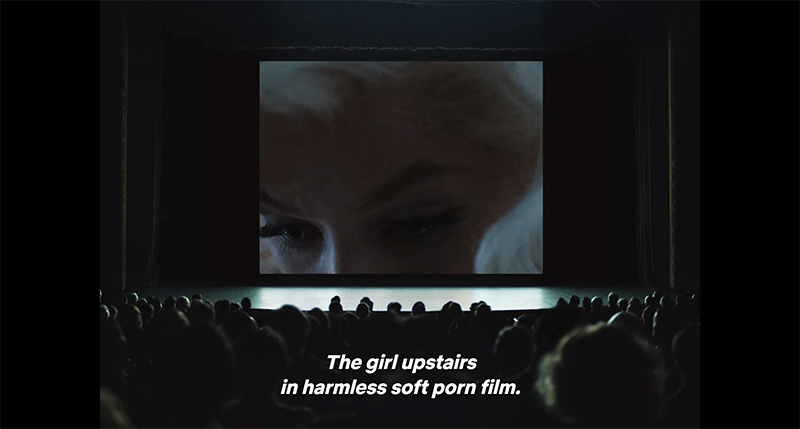
For a brief moment, we see Marilyn “servicing” JFK on the big screen of a movie theatre.
This is one of these scenes that are actually about Ana de Armas and not Marilyn Monroe. It is de Armas who performed this near-pornographic scene (disguised as Monroe) for the masses to see. She’s a descendant of the Marilyn Beta Kitten prototype.
After the fellatio, JFK hits Marilyn in the screen goes blank.
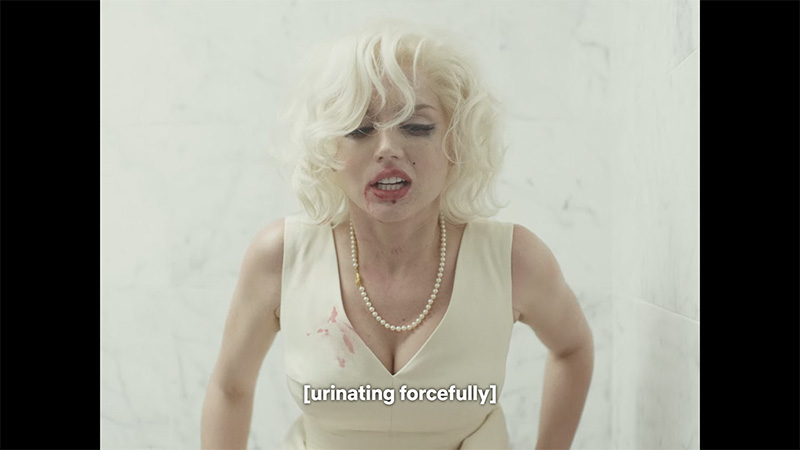
When Marilyn wakes up, she’s bloody and completely out of it, strongly hinting at the fact that she was violently raped. Evidently, this was not simply an “affair”. Marilyn was a slave in an elite sex trafficking ring.
Then, Marilyn gets pregnant with JFK.
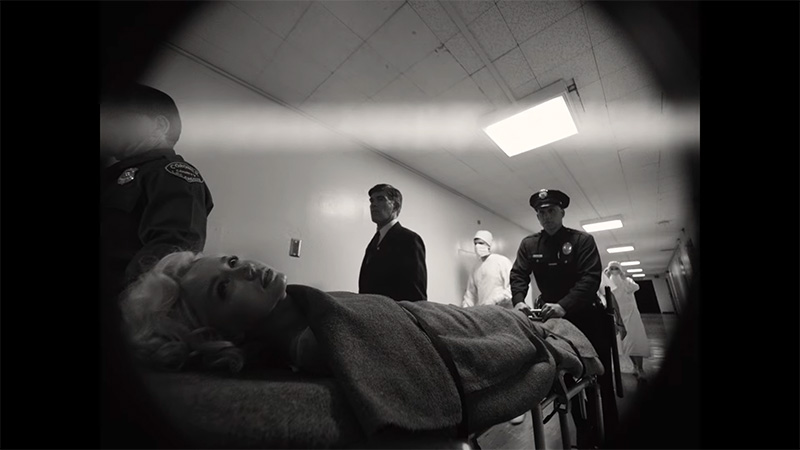
Law enforcement agents snatch her from her house and force her to get yet another abortion. You don’t want to know what the occult elite does with these aborted fetuses.
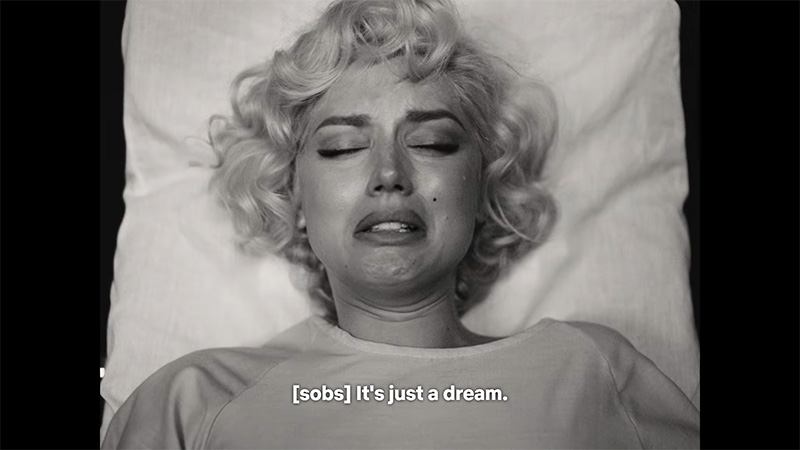
Faced with more trauma, Marilyn dissociates yet again.
Then, things manage to get worse.
The Death House
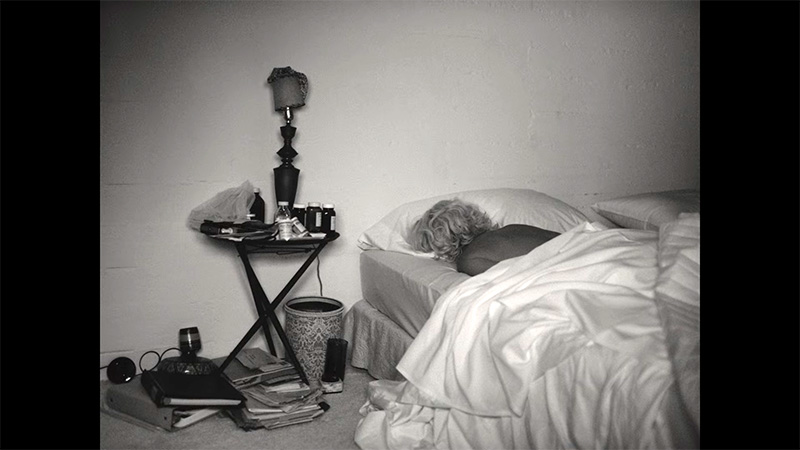
Blonde recreated Marilyn’s infamous death photo … inside the actual room she died in.
In past articles, I highlighted how mass media loves recreating Marilyn’s death photo (i.e. Madonna). There’s something about this broken celebrity laying dead next to bottles of pills that excites the Hollywood elite.
In Blonde, Ana de Armas not only recreates this picture, but she also relives Marilyn’s last days inside the actual house where she died. This situation has “bad mojo” written all over it and that’s exactly what happened. In an interview, the movie’s director Andrew Dominik said:
‘We were chasing her ghost around. We started filming the movie on the anniversary of the day that she died which was not planned, I only realised it the day before.
‘When we were shooting on that first day it was the apartment that she had lived in with her mother. The room she dies in the film is the room she died in. Her dust is everywhere in Los Angeles. It definitely took on elements of being like a séance. ‘She transported me to a different time and place. Ana has definitely channeled her.’
– Daily Mail, Ana de Armas felt the spirit of Marilyn Monroe ‘close to us’ when filming Blonde in her old house
Notice that the director said that de Armas “channeled” Marilyn. That’s the word they always use when a celebrity follows Marilyn’s programming.
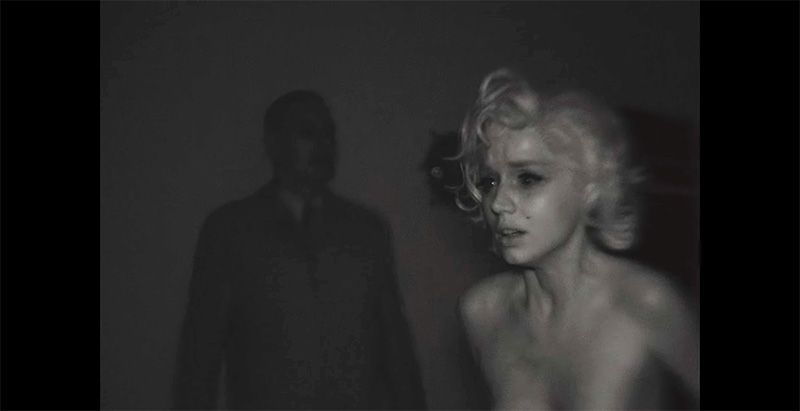
As Marilyn walks around her room in a dazed, dissociative state, unidentified “agents” lurk in the shadows.
On numerous occasions during the movie, we hear telephones ringing. At one point, when she answers, we hear strange sounds. Other than reminding us that Marilyn was under constant surveillance, MK slaves can be triggered remotely through phones using specific sounds. None of this is spelled out in the movie, but it’s there.
Finally, after watching her suffer for nearly three hours, Marilyn swallows a bunch of pills and dies.
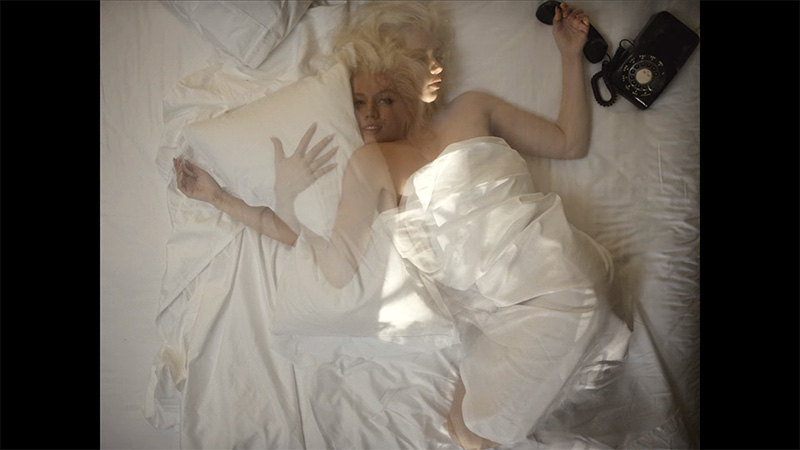
In this scene, we see a juxtaposition of Monroe’s dead body with a recreation of a picture from her “In bed with Marilyn” photoshoot.
While Norma Jane is dead, the Marilyn Monroe alter persona lives on.
In Conclusion
Although Blonde is said to be a “fictionalized” version of Marilyn’s story, it is possibly the most accurate depiction of her actual life ever seen on film. Through subtle and not-so-subtle scenes, Blonde hints at the forces that controlled Monroe’s entire life and the traumas she was subjected to as an industry slave.
With that being said, the movie cannot be described as informative or eye-opening. It is rather exploitative. It is not about exposing the dark side of the industry, it is more about watching Ana de Armas – disguised as Marilyn – reliving the traumas and humiliations of Marilyn. Indeed, in the span of three hours, we see Ana de Armas get raped, drugged, beaten, humiliated, and everything in between.
The movie puts on the suffering on screen but explains none of it. It doesn’t want to wake us up, it wants us to feel some of that sadistic satisfaction these people feel when they subject stars to outright torture. In a strange way, Ana de Armas was subjected to actual trauma. And, for this sacrifice, she got rewarded by the all-important Academy with an Oscar nomination.
- Jay-Z is next
- Terrifying look at how Meta smart glasses can reveal personal details about strangers on the street — even home addresses
- How child-star Justin Bieber was 'thrown to the wolves' and allowed into Diddy's depraved orbit: Topless parties… a pact of secrecy… and an 'unsupervised' 48 hours
- Cannibal restaurant 'with human heads on the menu' closed down
- Microsoft has an interesting captcha
- (YUTA – Off The Mask MV) – The Kpop industry doesn't even hide anymore
- Feds say no money left after spending it on illegals
Get an e-mail notification as soon as a new article is published on The Vigilant Citizen.
-
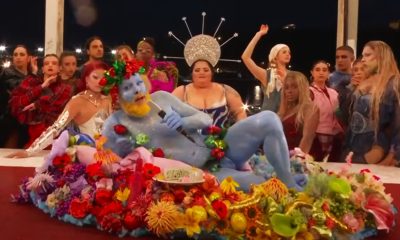
 Vigilant Reports2 months ago
Vigilant Reports2 months agoAn In-Depth Look at the Depravity of the 2024 Paris Olympics Opening Ceremony
-

 Pics of the Month2 months ago
Pics of the Month2 months agoSymbolic Pics of the Month 08/24
-

 Vigilant Reports3 months ago
Vigilant Reports3 months agoTrump’s Shooter Reenacted “The Manchurian Candidate.” Was He Brainwashed by Handlers? Or Social Media?
-
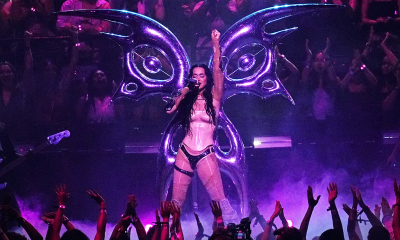
 Music Business3 weeks ago
Music Business3 weeks agoThe Hidden Meaning of Katy Perry’s Highly Symbolic Performance at the 2024 VMAs
-

 Music Business1 month ago
Music Business1 month agoSomething’s Terribly Wrong With Sabrina Carpenter and her Video “Taste”
-

 Movies and TV2 months ago
Movies and TV2 months agoPolitics and Mind Control: Why “The Manchurian Candidate” is More Relevant Than Ever
-
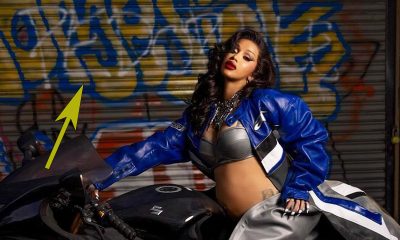
 Pics of the Month2 weeks ago
Pics of the Month2 weeks agoSymbolic Pics of the Month 09/24
-

 Sinister Sites4 weeks ago
Sinister Sites4 weeks agoSinister Sites: Baron Empain Palace, an Egyptian “House of Horrors”


